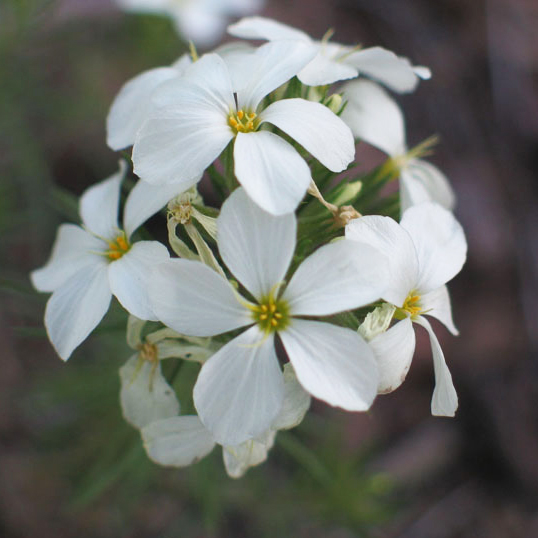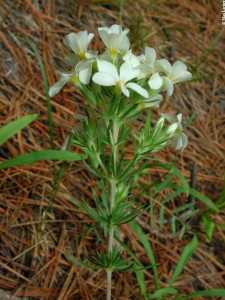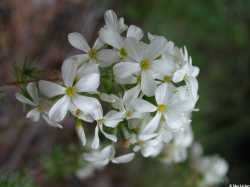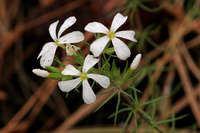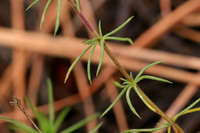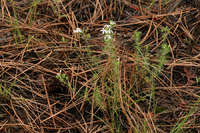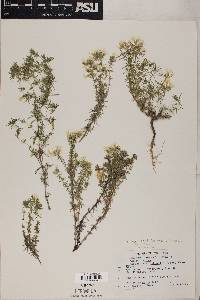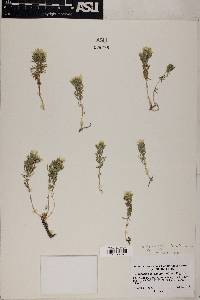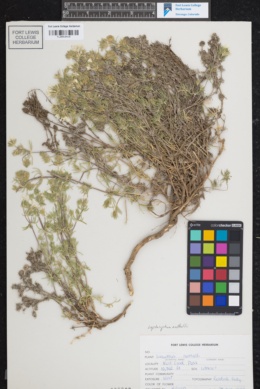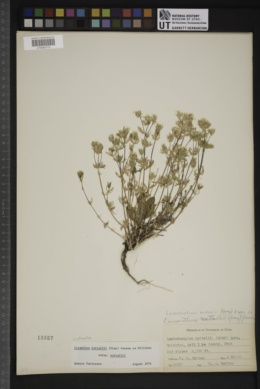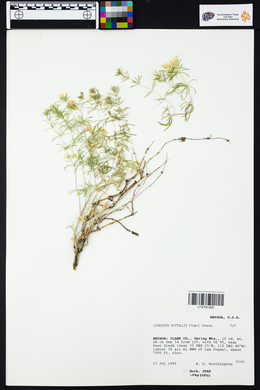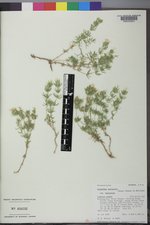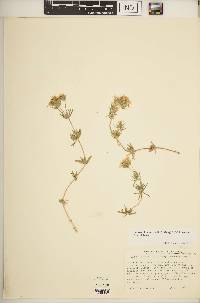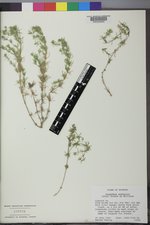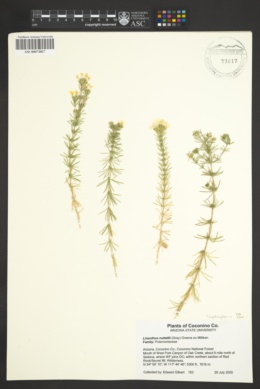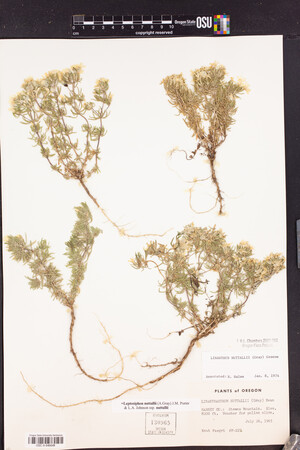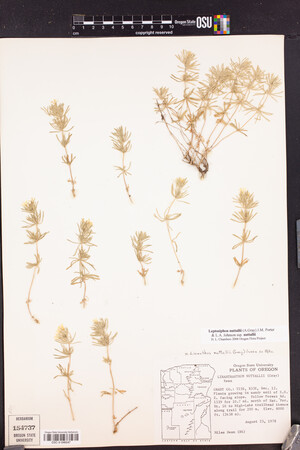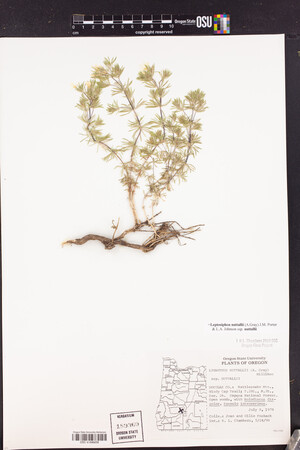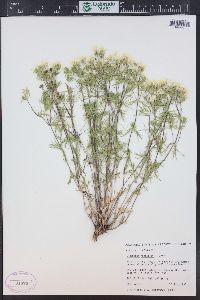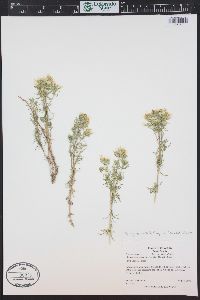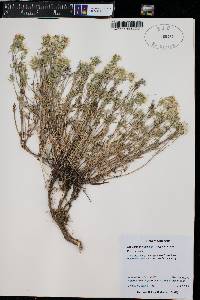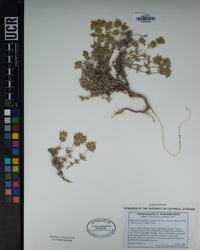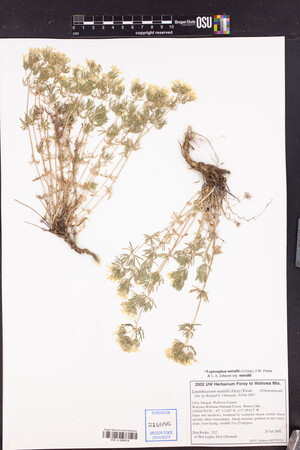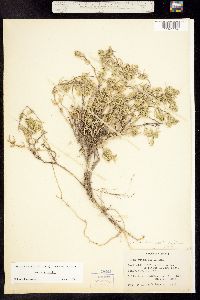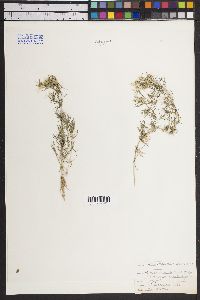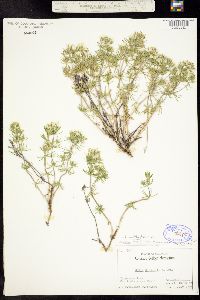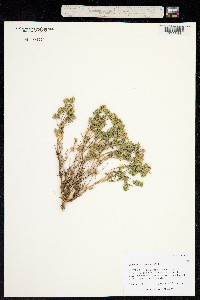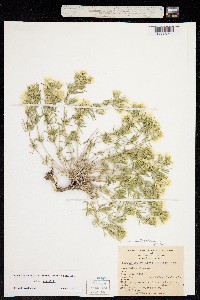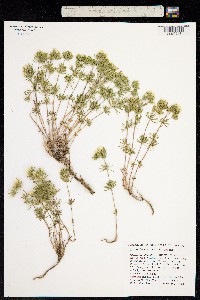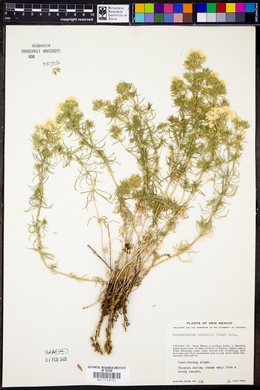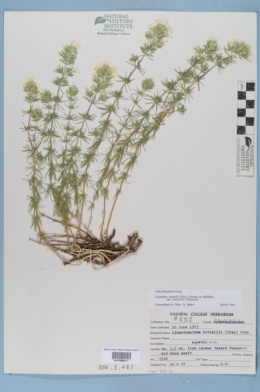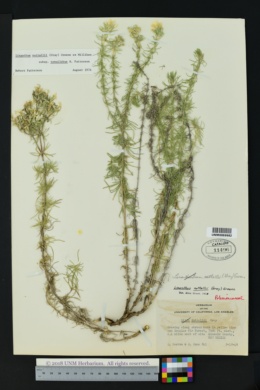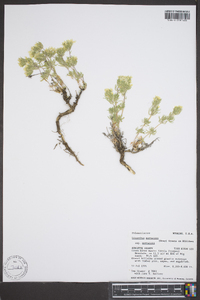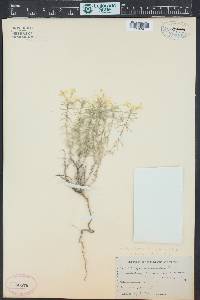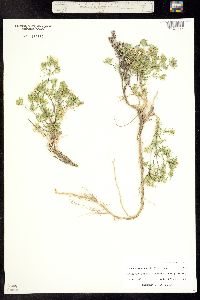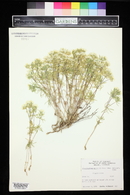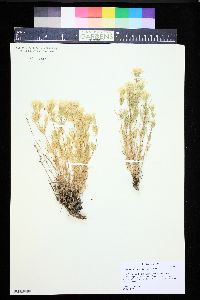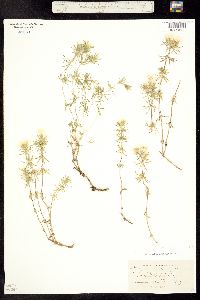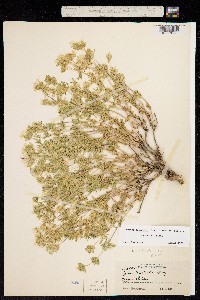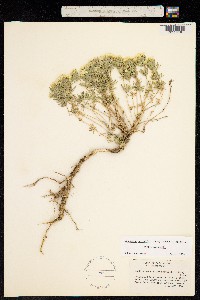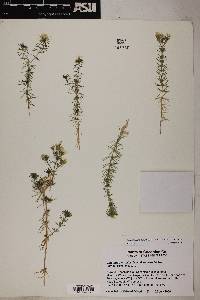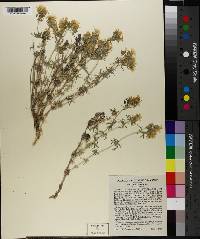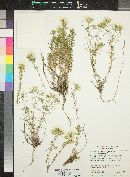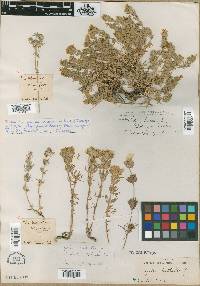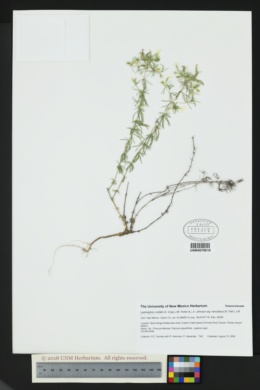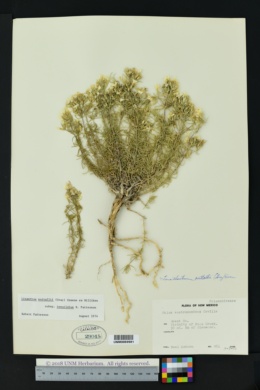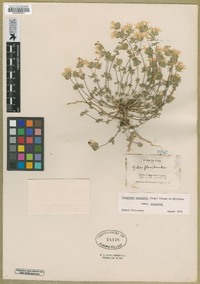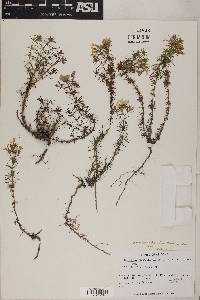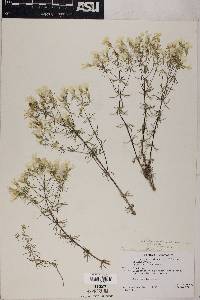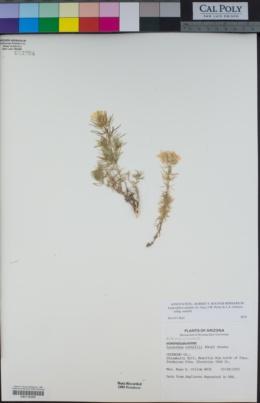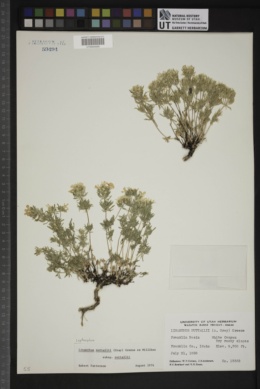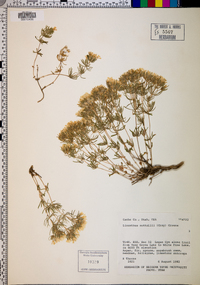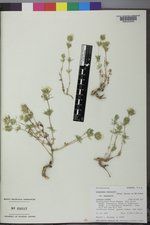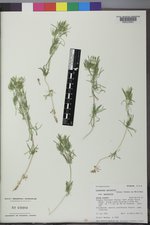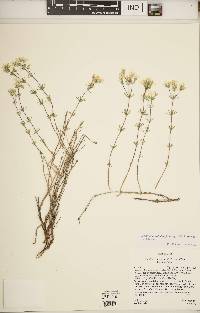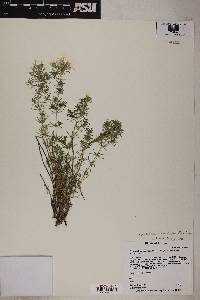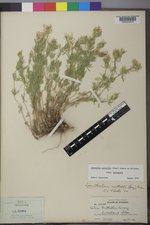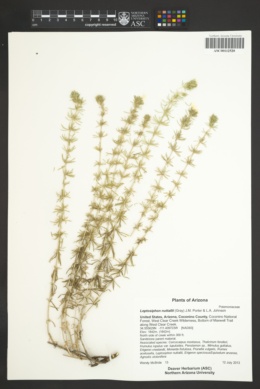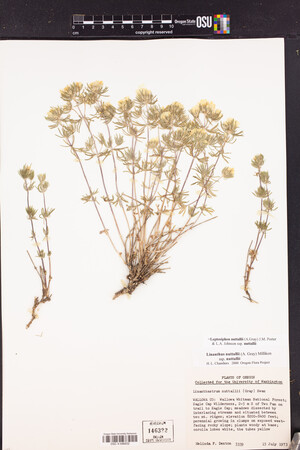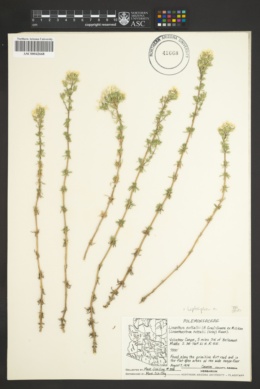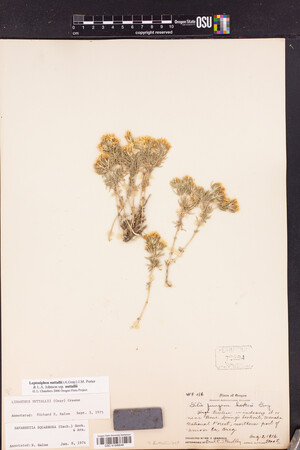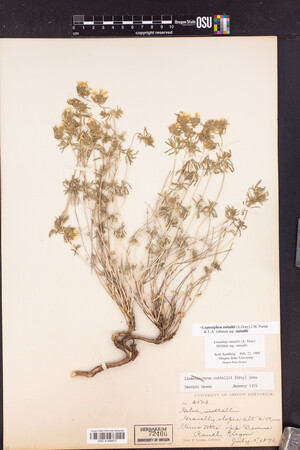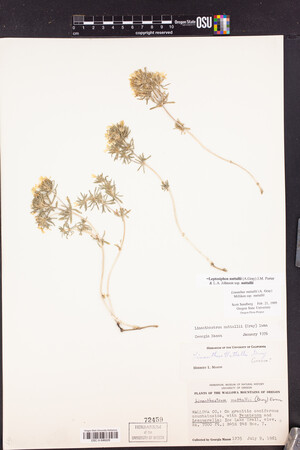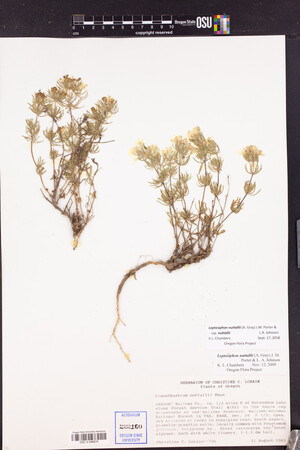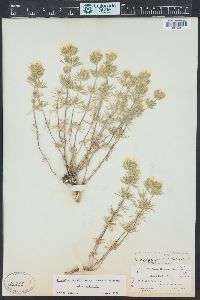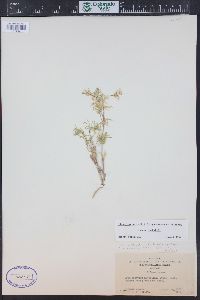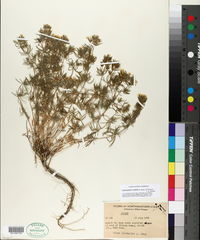Linanthus nuttallii
|
|
|
|
Family: Polemoniaceae
Nuttall's linanthus, more...Nuttall's Perennial Gily-Flower, Nuttall's desert trumpets, Nuttall's desert-trumpets, Nuttall's deserttrumpets
[Gilia nuttallii A.Gray, moreLeptodactylon nuttallii (A.Gray) Rydb., Leptosiphon nuttallii (A. Gray) J. M. Porter & L. A. Johnson, Linanthastrum nuttallii (A. Gray) Ewan, Linanthastrum nuttallii var. nuttallii] |
PLANT: Suffrutescent perennial to 3 dm tall, branching at the base; stems erect, glabrous to short pubescent. LEAVES: lobes (4-)5-9, linear to oblong, spinulose, 10-20 mm long, short pubescent. INFLORESCENCE: compact, the flowers 2-5 in terminal, bracteate clusters. FLOWERS: subsessile; calyx glabrous to pubescent, narrowly campanulate, 7-10 mm long, the lobes longer than the tube, the membranes mostly herbaceous, the hyaline part narrow, often obscure; corolla diurnal, salverform, 8-15 mm long, the tube and lobes white, the throat yellow; stamens inserted on the throat; style slightly exserted. 2n=18. NOTES: 3 subspp.; w N. Amer. Reports of Linanthus nuttallii subsp. floribundus (Gray) Munz [Linanthus floribundus (A. Gray) Milliken] from AZ are incorrect. REFERENCES: Dieter H. Wilken and J. Mark Porter, 2005, Vascular Plants of Arizona: Polemoniaceae. CANOTIA 1: 1-37. Wilken and Porter 2005, Jepson 2012, Kearney and Peebles 1969 Duration: Perennial Nativity: Native Lifeform: Forb/Herb General: Herbaceous or suffrutescent perennials, to 30 cm tall, stems many, erect, herbage glabrous to short pubescent. Leaves: Opposite, clustered or sometimes appearing whorled, blades green with 5-9 linear to oblong lobes, these 5-10 mm long with spinulose tips, surfaces short pubescent. Flowers: White, with 5 petal-like, rounded lobes, corollas salverform in outline, 8-15 mm long, the tube and lobes white, the throats yellow, calyxes narrowly campanulate, 7-10 mm long, with glabrous to pubescent surfaces, the lobes longer than the tube and with herbaceous membranes, stamens inserted on the throat, styles slightly exserted, flowers subsessile, borne in compact clusters of 2-5 in terminal, bracteate infloresences. Fruits: Capsules. Seeds to 2 mm long. Ecology: Found in openings in pine forests, from 1,500-7,500 ft (457-2286 m); flowering, June-November. Distribution: Idaho and Washington to Arizona, California, and Mexico. Notes: This species is low-growing, with bright green stems withopposite (or appearing whorled) clusters of leaves and rounded mounds of 5-lobed white flowers at stem tips. Jepson 2012 reports this species as L. nutallii subsp..nutallii, as does the USDA Plants website as of June 2012. This species appears in older versions of Kearney and Peebles as Linanthastrum nuttallii, and the synonyms listed here are taken from Kearney and Peebles 1969, who report it occurring in Apache, Navajo, Coconino, Yavapai, Greenlee, Gila, and Pima counties. Synonyms: There is uncertainty about this species and its proper nomenclature. Editor: LCrumbacher2012 Etymology: Linanthus comes from the Greek linon meaning "flax" and anthos meaning "flower", and nuttallii is named for the Englishman Thomas Nuttall (1786-1859), a botanist, ornithologist, curator of the Harvard Botanic Gardens, and author in 1816 of Genera of North American Plants. Duration: Perennial Nativity: Native Lifeform: Forb/Herb General: Perennial, aromatic, up to 30 cm tall; stems numerous, slender, erect to decumbent, simple to branched, puberulent above, woody towards the base; taprooted. Leaves: Cauline, numerous, crowded, opposite, seldom alternate above, simple to palmately lobed, up to 2 cm long, lobes 5-9, linear to filiform, glabrous to puberulent, apices acute to weakly spine-tipped, each blade commonly with an axillary fascicle of smaller leaves. Flowers: Inflorescence raceme- to panicle-like, narrow, one-sided, the flowers nearly sessile to short-pedicellate; calyx 4- 6 mm long, glandular-puberulent, the tips acute to acuminate; corolla white to lavender, the tube 25-35 mm long, the lobes lanceolate to ovate, inconspicuously flecked with pink or lavender; anthers and stigma slightly exserted; flowers July-September. Fruits: Capsule, ovoid to oblong, 4-5.5 mm long. Ecology: Meadows, coniferous forests, oak woodlands, sandy to rocky soils; 1650-2600 m (5400-8500 ft); Apache, southwestern U.S., northwestern Mexico. Notes: The leaves of Leptosiphon nuttallii are distinctly softer than those of Linanthus pungens. Synonyms: Linanthus nuttallii, Leptodactylon nuttallii Editor: Springer et al. 2008 |

